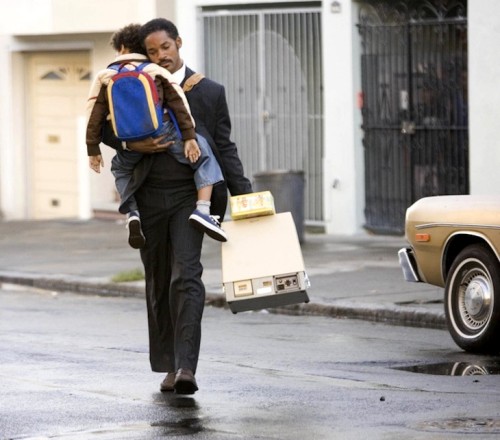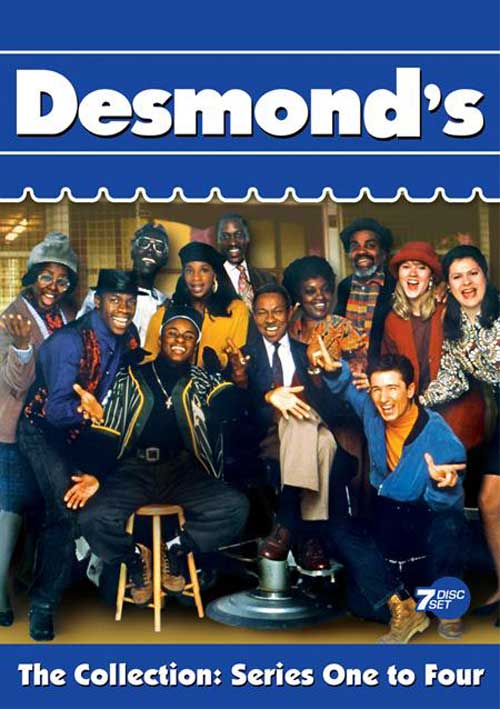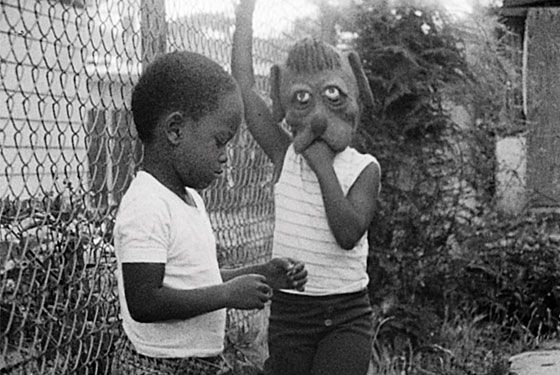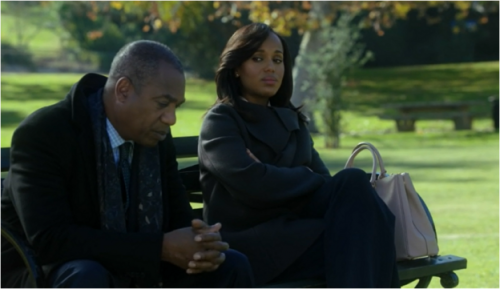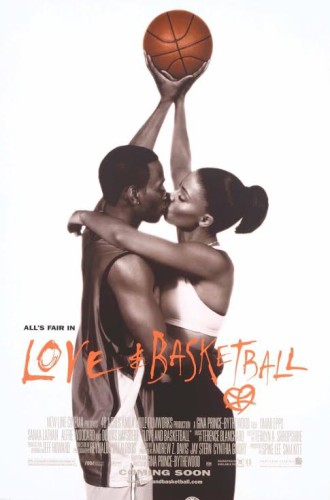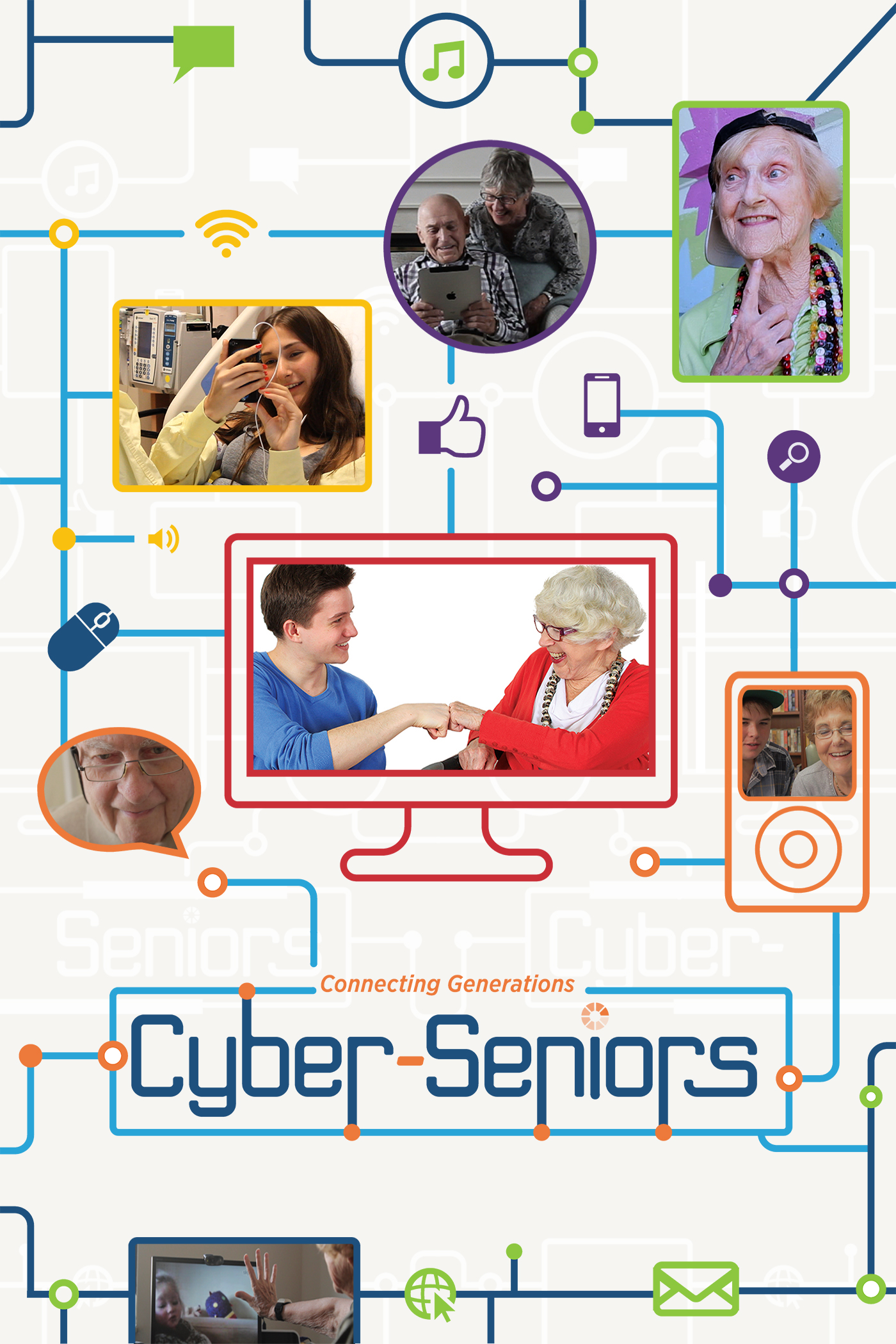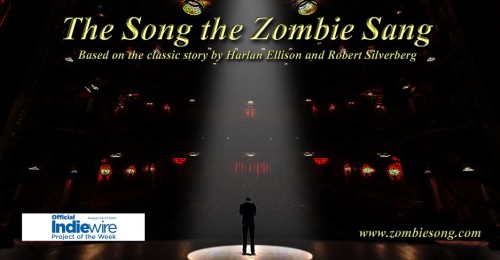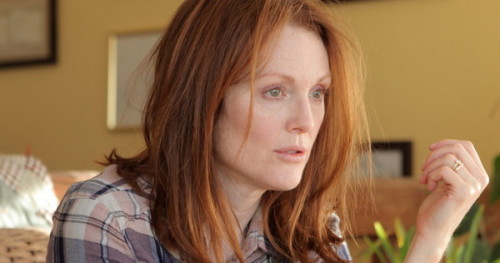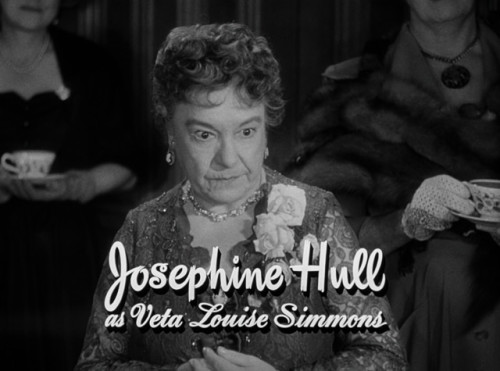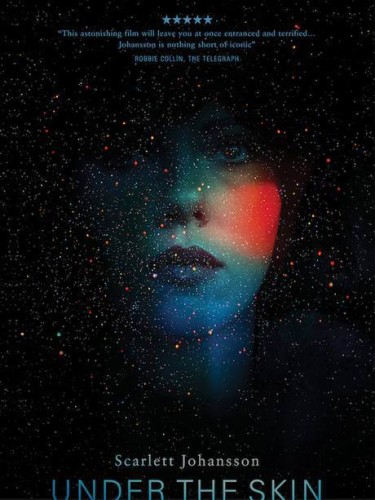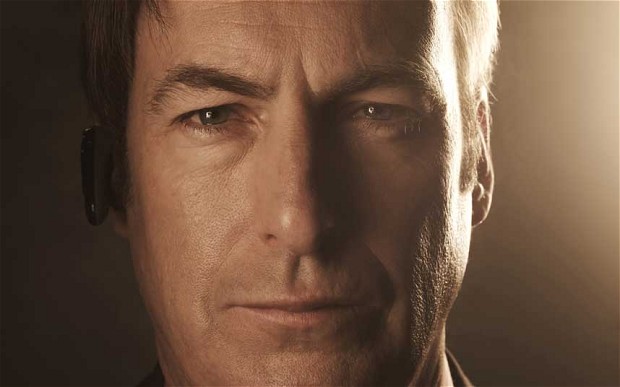
This guest post by Jacqueline Valencia previously appeared at These Girls on Film and is cross-posted with permission.
Contains spoilers.
The mulling over of Jonathan Glazer’s Under The Skin is an entirely different beast than the actual watching of the film. In fact, I started writing this sentence a few months after writing the one before it. I had to re-watch it and digest it, read the original book by Michael Faber, and then re-watch it again. I have to backtrack a bit though (and please forgive the ramble or pleonasm, it always ends up somewhere…at least I hope it does for the reader). Since the film is very loosely based on the book, I won’t use the names of the characters from it, instead I will refer to Scarlett Johansson’s character as the alien, Laura, and Jeremy McWilliams as The Biker.
I’ve just finished reading Joanna Russ’s The Female Man. When the book first came out, it left a major impression on feminists and the science fiction community. The novel is set in various times and numerous dimensions within the varying perspectives of all the women that inhabit those worlds. Each character has her chance at inquiring and defining what it means to be a person living as a female. The book isn’t connected to Under The Skin, but it did open up some inner discourse about how gender identity is part of the film’s unsettling nature, thus making it a big part of this film.
In Under The Skin, we first witness a series of enigmatic shapes and sounds, some of them analogue or the voice of someone figuring out a language, and a flash of what seems like a space ship hurtling through the blackness. The images dissolve into The Biker riding a long stretch of road. The lights of a city are reflected on his helmet (reminiscent of the psychedelic light show in Stanley Kubrick’s 2001). He then goes into a ravine and grabs the body of dead woman and places her in an unmarked van. In the next scene we see Laura, naked, taking off the dead woman’s clothes to put them on herself. This dead woman could possibly be another alien that Laura is replacing. The Biker’s job is to observe and keep tabs on Laura and since The Biker knew where to find this dead woman, it’s more than likely he was following her all along. The dead women also has the same body shape as Laura and looks like her.

Laura looks at the dead woman’s body, water from the river The Biker recovered her from, is released from her dead eyes, like tears onto the sides of her face. She picks up an ant from the dead woman’s body and watches it crawl over her fingers as she examines it. I think of formication here, the sensation of having insects crawling under your skin. The aliens here inhabit a foreign skin like a human suit to capture their prey. Laura will undergo a psychological transformation while in the suit and since we are unaware of her emotions or motivations, we witness her visibly struggling with the world that this human suit is made to navigate. Although she is a predator, she is like the ant, a tiny being away from its colony, defenseless in a foreign world.
Glazer displays a combination of completely silent moments with scenes plucked out of reality through the use of hidden cameras and non-actors. As Laura goes shopping for new clothes at the mall and The Biker goes about riding through the Scottish countryside, neither of them utters a word. It’s only when Laura goes about searching for and grooming her possible prey, that she speaks. She selects her prey (always male) by asking them if they are connected in any way to anyone or anything. If they are, she lets them go, if they aren’t, she seduces them by asking them back to her place.
Her place is an old building with decaying walls which is dank and dark. The men follow her in and out into a black room with a slick black floor. Laura walks provocatively away, coaxing them without letting the men touch her. Walking forward the men keep their eyes fixed on Laura even though the black floor soon becomes a liquid and they are swallowed up into it. Laura retraces her steps, picking up her clothes and the floor is still solid under her feet. The victim will look above to see her walking away, yet he seems unable to struggle or swim back to the surface. At one point, one of the victims observes another man’s innards sucked out, just before he goes through the same fate, only his outer later of skin left, floating in the jetsam. The meat of the victims then travels onto a conveyor belt of fleshy innards to a light source in the distance.
In the book, Laura the Alien is named Isserly, an extraterrestrial who is genetically modified by a corporation on her home planet to look human. Isserley “hunts” heavy set human males so her employer can harvest their meat. Human meat is a delicacy in her world. In the film, no mention is made about her job or who she is doing this for, just that this is what she does and what she is made to do. Her nature is subtly implied in two scenes. First, we see The Biker obdurately inspect her; an ominous beat plays in the background. Laura stands at attention while he examines her, carefully looking at her profile, then up close into her eyes in an intimidating stance. Her eyes are blank and looking off into the distance. In another scene, she brings home a disfigured man. He’s the only one she’s made herself completely naked for and as he descends into the black pool, an alien stares back at her from across the way. Is she looking at her real self or is she looking at a superior? It is unclear, but it is known that she is continually being watched to make sure she doesn’t deviate from her function: to capture men to bring into the black pool.

Laura doesn’t seem to question anything about herself for awhile, even when she witnesses a couple drowning and leaves their child alone to die with the tide coming in. There’s no empathy for her prey. She is given a rose by a stranger through a rose salesman. She notices blood on it and for a moment her expressions are of confusion. Does she believe the blood is hers? How can it be, if she isn’t human? Her breathing is laboured and she seems out of breath in the van. Then she looks around and sees that the salesman has cut himself with the rose thorns. Laura looks almost sad and disappointed.Was she beginning to think she was human after all?

It’s only until Laura begins to question herself and her place in the world when she observes the women around her in the next scene. She’s in her van and as she listens to the report of the missing couple and child she witnessed drowning, a scene of just women, conversing, talking, and walking begins. For a bit, it’s like the montage of her looking for her male victims, with the foreboding background music to match. Later on this same sort of montage occurs, but instead of the scary soundtrack, we hear the hustle and bustle of the street as our eyes scan the women on the screen. There are men in the montage, but overall there are mostly women. There’s a quick flash of Laura’s eye and instead of blackness, we see her pupil and the green-gold iris around it. A calming drone plays on as we watch women laughing and interacting with each other. Their images coalesce into collage of gold lights, much like the intricate gold in Gustav Klimt paintings. Laura’s face dissolves and eventually comes back to the surface among the golden images.

She is back on the hunt right after, but something feels a bit different. A roaring sound is heard as she waits in her van. A man knocks on her window and suddenly her van is surround by men trying to get in. She is indifferent at first until she realizes she might be in danger and drives off. The predator has all of sudden become possible prey.
After she has put the disfigured man in the pool, she catches her reflection in a small mirror on the way out of the building. She looks at herself closely. She turns to hear a fly buzzing to be let out by the door. The light from outside is reflected in her eyes as is the fly’s movements. This creates the effect of a galaxy in her eyes. From then on, her eyes go from blank and dark to shiny and much more prominent in her display of emotions.
These are all signs of her questioning her existence. Obviously, by the end of the film we are shown that her Johansson exterior is merely a suit to the similarly looking alien we see earlier in the film. Something compels her to explore herself as human and a woman on earth. Laura tries a piece of chocolate cake at a restaurant and chokes on it, frustrated that she cannot eat like humans do. She walks out and is taken in by the kindness of a stranger. In his home, she stands in the corner, like a helpless creature until he leaves her on her own. In a room by herself, she takes off her clothes and looks at her body: the movement of her joints, the curve of her back, are all a sort of scientific delight for her. Scarlett Johansson, besides being an incredibly talented actress is also known for her voluptuous and almost perfect beauty. Yet there’s nothing sexual about this scene. Here lies before our eyes a gorgeous woman, but the scene elicits more questions than physical reactions. It’s like when you’re a kid and realize, by some sort of infantile enlightenment, that you can move your hands just by thinking about it. The scene with its red porn lighting becomes absurd and odd in its rendering.
She tries to have sex with the kind stranger and something isn’t right there either. Laura stops him and looks between her legs with a flashlight. Upset, she leaves the house and treks into the woods. There she loses herself to the extreme wilderness of the area only to be found by a logger who eventually tries to rape her. As she tries to escape the ranger ends up tearing her clothes and eventually her human suit comes apart. This frightens the logger. Laura takes part of the suit into her hands and looks into the blinking eyes of her suit. The logger returns, pours gasoline on her, and sets her on fire. Laura runs off and surrenders to her fate as her ashes mix with the snow. In the book, the ending is similar, but she is in full control of her death because she sets off an explosion to eliminate any trace of herself.
The scariest part of this scene isn’t the final unmasking of her true alien form. The scariest part of this scene is the logger coming back so easily with gasoline and setting fire to her. Is this first thing that comes to people’s brains when confronted with the unknown? Or does this logger have a can of gasoline and a match ready to set his rape victims on fire? It came to mind because as I was watching this with my friend, they asked, “Who does that? Wouldn’t they call someone on the truck radio or a cell phone? Call the police?”
Another thing that’s quite odd and unsettling is that in both scenes where Laura finds herself in danger (her van being attacked, her attempted rape and eventual murder), we’ve gone from being frightened of her to being afraid for her. The audience is left empathizing with something that is responsible for the deaths of many people. Glazer accomplishes this feat by giving us a film where the main focus is the predator’s/Laura’s point of view. Without an inner dialogue the audience is forced to inhabit and decipher her movements and expressions. The hidden cameras utilized to film most of the movie and its spontaneous dialogues, adds to that foreign feel, especially with the thick Scottish accents of the town’s inhabitants. Laura is the only one we can readily hear and make sense out of, yet she’s an alien we know almost nothing about.
This brings me back to Joanna Russ’s The Female Man. All of the woman in the book, inhabit different worlds that they cannot make sense of, they are aliens in each others worlds as well, but they find meaning and motivations out of their struggle to identify away from men. Not only that, but the author herself has admitted that all the females within the book are facets of herself, at times, even she interjects as the narrator. There is much complex navigation required for the reader in the book, but there are clues throughout making the book more like an identity game, than a passive read. At one point, the characters all find each other in Whileaway, a world where men have died off from a plague eight hundred years ago. Women procreate using technologies and create a utopian world. As Joanna, Jeannine, Janet, and all the various Js interact on Whileaway, Vittoria, Janet’s wife tells the story about a girl raised by bears. The girl grows to find her difference to much and goes to live with the humans, but finds that unsatisfying as well. Through riddles and tribulations the girl continually struggles to find her place.
“Wait a minute,” said I. “This story doesn’t have an end. It just goes on and on….”
“I tell things,” said by dignified little friend (through Vittoria) “the way they happen,” and slipping her head under the induction helmet without further comment (and her hands into the waldoes) she went back to stirring her blanc-mange with her forefinger. She said something casually over her shoulder to Vittoria, who translated:
“Anyone who lives in two worlds, ” (said Vittoria) “is bound to have a complicated life.”
(I learned later that she had spent three days making up the story. It was, of course, about me). – Russ, Joanna. The Female Man. Boston: Beacon, 1986. pg 99. Print.
The power Laura’s character finds to move away from her passive relationship with her employer is through her identification as a woman among men on earth. That power is in the male gaze and much has been written about it since the film came out in 2013:
Laura doesn’t have a man touch her or see her nude (except for the disfigured man). She merely lures them into the pool with her body, and the expectation from her sexuality. Reduced to her body as a passive weapon, she is also empowered by it. She doesn’t hunt women and she doesn’t interact with them, but she is one of them. It’s a very confusing process for her because she has been programmed to interact with only the male gender. Even when she exhibits wonder and emotions through observing other women does she look to interact with females, instead she goes off on her own and escapes the city, only to be at the mercy of her helpless female exterior. Surely she does run and she does hit back when she is being attacked. But she is shocked, demoralized, and it’s the first time that she finds herself fearing for her own life.
I am intrigued with the fact that The Biker is a male as well and the fact that towards the end, we see him with other bikers like himself. They search for her along the winding, treacherous roads of Scotland. In the end, The Biker is seen looking off into the snowy wilderness, probably aware that he’s completely lost Laura already to the elements. Are there more aliens like Laura out there since there are more Bikers, or were there just sent there to find her?
This film leaves more questions than it answers which has led to much speculations by critics if the movie is merely trying to be too art house by leaving everything up to interpretation or if it’s at its core and intelligently filmed and well-timed work? In its defence, I posit the analysis above and the divisive reviews that the film has garnered. It’s a slow moving narrative with blank spots filled in with thought and wonder. Today’s filmmaking world is out to feed the all encompassing instant gratification machine. However, not every book film or film will touch every audience member. Cinema, no matter if its blockbusting or if its high-brow, thrives on inhabiting difference and expressing it progressively, not stagnantly. There’s hope in films that question how to tell a tale, how to film a film, what makes up a film, and what is an artist’s intention. If anything films like Under The Skin, question the now and how through its premise. It definitely got me thinking more about how disenfranchised and alien-like woman can be in different portrayals of themselves as women.
The alien Laura is, confounds audiences, it makes them question why we have not had female characters like her before. She is a lonely woman in a lonely man film world. While her existence might astonish some, for some women, we find ourselves in her. Who am I, if not a woman who fulfils certain duties within her highly regulated domain? While laws, without question, are continually placed on how I use and make my body up, very rarely do we find ourselves combatting laws that place these same restricting laws on men’s bodies. Woman find themselves often as the meat on the conveyer belt, a delicacy to society’s standards, but here we are, alien in a world that negates that we are very much human. See? The thought or overthought is amazing when trying to decipher this film and in that I can see more than what lies beyond what is presented on the screen.
Much like the scene in Taxi Driver where a dyspeptic Travis Bickell walks through the wet streets of NYC, alienated from the city he must work on, there’s a gorgeous scene that sticks with me in Under The Skin. It’s this one:
[youtube_sc url=”https://www.youtube.com/watch?v=IrMP3yfF-Yw”]
Laura looks around herself and finds herself alone in a strange land. Her sight is obscured by the white fog that surrounds her. It’s an eerily calming scene. The film itself hints at dangers at every corner or a darkness that follows Laura, yet in this scene, she is still isolated, but on the verge of something entirely new to her. The possibilities beyond that moment are endless. She is human and can be anything and anyone.
Jacqueline Valencia is a Toronto-based poet and critic. She the author of The Octopus Complex (Lyrical Myrical Press, 2013) and featured in the 2015 anthology Gods Memes And Monsters (Stone Skin Press). Jacqueline is the senior staff film critic at Next Projection and the founding editor of These Girls On Film.
